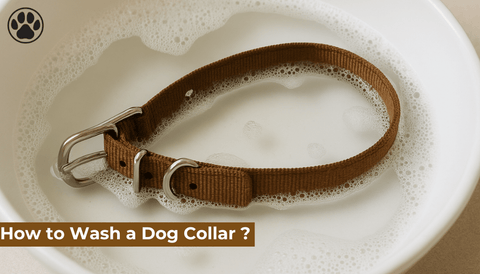
Is Honey Good for Dogs?
of reading - words
Honey has been celebrated for its natural sweetness and numerous health benefits for humans, but what about dogs? Can this golden liquid also benefit our furry friends, or does it pose potential risks? In this article, we’ll explore whether honey is good for dogs, the benefits it may offer, the potential risks, and how to safely incorporate it into their diet.
What Is Honey?
Honey is a natural sweetener produced by bees from the nectar of flowers. It is rich in nutrients, antioxidants, and enzymes, making it a popular choice for natural remedies and culinary uses. While humans have long enjoyed honey for its health benefits, it’s important to understand how it interacts with a dog’s unique digestive system.
Can Dogs Eat Honey?
Yes, dogs can eat honey in moderation. It is not toxic to dogs and can provide some health benefits when given in small amounts. However, it’s essential to consider your dog’s individual health, age, and dietary needs before introducing honey into their diet.
The Benefits of Honey for Dogs
1. Rich in Nutrients
Honey contains vitamins and minerals that can support your dog’s overall health, including:
-
Vitamin C: Boosts the immune system
-
Vitamin B: Supports energy production and brain health
-
Minerals: Includes calcium, potassium, and magnesium
2. Natural Energy Source
Honey is a quick source of energy due to its natural sugars. It can be beneficial for active or working dogs that need an energy boost.
3. Soothes Coughs and Throat Irritation
The natural enzymes in honey can help soothe a dog’s throat, making it a potential remedy for mild coughs or irritation.
4. Allergy Relief
Local raw honey contains trace amounts of pollen, which may help desensitize dogs to environmental allergens over time. This is similar to the way humans use honey to alleviate seasonal allergies.
5. Antioxidant Properties
Honey is rich in antioxidants that help combat free radicals in the body, reducing oxidative stress and promoting overall health.
6. Promotes Wound Healing
Topical application of honey has antibacterial and antimicrobial properties, making it useful for treating minor cuts, burns, or skin irritations in dogs.
Potential Risks of Honey for Dogs
1. High Sugar Content
While honey is natural, it is still high in sugar. Excessive consumption can lead to weight gain, obesity, and even diabetes in dogs.
2. Dental Issues
The sugar in honey can contribute to plaque buildup and dental decay if not managed properly. Regular dental care is essential if you include honey in your dog’s diet.
3. Risk for Puppies
Raw honey may contain botulism spores, which can be harmful to puppies or dogs with compromised immune systems. Avoid giving raw honey to these vulnerable groups.
4. Allergic Reactions
Although rare, some dogs may be allergic to honey. Watch for signs like itching, swelling, or difficulty breathing after introducing honey to your dog’s diet.
How to Safely Give Honey to Your Dog
Start Small
Introduce honey gradually to see how your dog reacts. Start with a small amount, such as a quarter teaspoon for small dogs and half a teaspoon for larger breeds.
Choose the Right Type of Honey
-
Raw Honey: Contains more nutrients and enzymes compared to processed honey, but should be avoided for puppies and immunocompromised dogs.
-
Manuka Honey: Known for its superior antibacterial properties, it can be especially beneficial for topical applications.
Avoid Overfeeding
Limit honey intake to avoid potential health risks. A general guideline is no more than a teaspoon per day for medium to large dogs and less for smaller breeds.
Monitor Your Dog
Observe your dog for any adverse reactions, such as gastrointestinal upset, after consuming honey. If any issues arise, discontinue use and consult your veterinarian.
Use as a Treat, Not a Staple
Honey should be considered an occasional treat rather than a regular part of your dog’s diet.
When Should You Avoid Giving Honey to Your Dog?
Avoid honey if your dog has:
-
Diabetes: The high sugar content can worsen their condition.
-
Obesity: Honey can contribute to weight gain.
-
Puppy Status: Puppies under 12 months should not consume honey due to the risk of botulism.
Creative Ways to Include Honey in Your Dog’s Diet
1. As a Topping
Drizzle a small amount of honey over your dog’s regular food for an occasional treat.
2. In Homemade Treats
Incorporate honey into homemade dog treats for a natural sweetener.
3. Mixed with Peanut Butter
Combine honey with unsalted, xylitol-free peanut butter as a tasty snack or for hiding pills.
4. For Wound Care
Apply honey topically to minor cuts or scrapes after consulting your veterinarian.
Frequently Asked Questions About Honey and Dogs
Is honey safe for all dogs?
Honey is generally safe for healthy adult dogs when given in moderation. Avoid giving it to puppies, diabetic dogs, or those with compromised immune systems.
How much honey can I give my dog?
A teaspoon per day is the maximum recommended amount for medium to large dogs. Smaller dogs should have less.
Can honey help with my dog’s allergies?
Local raw honey may help desensitize dogs to environmental allergens over time, but results vary and should not replace prescribed allergy treatments.
What type of honey is best for dogs?
Raw or Manuka honey is the best choice due to its higher nutrient content and health benefits.
Can I use honey for my dog’s wounds?
Yes, honey’s antibacterial properties make it suitable for treating minor wounds. Consult your veterinarian before use.
What are the signs of an allergic reaction to honey?
Symptoms include itching, swelling, vomiting, or difficulty breathing. If you notice these signs, stop giving honey and contact your veterinarian.




